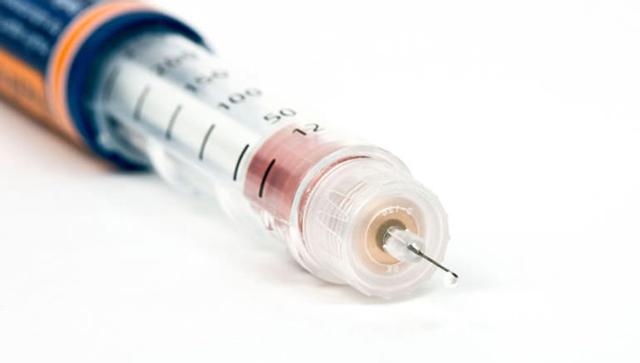You are here
Immunotherapy succeeds in thwarting Type 1 diabetes
By Los Angeles Times (TNS) - Aug 22,2017 - Last updated at Aug 22,2017

Photo courtesy of oliveoiltimes.com
A form of immunotherapy gaining ground as a way to treat childhood food allergies has shown promise in treating another rising scourge of children and young adults: Type 1 diabetes.
In a small but rigorous clinical trial, British investigators gave patients recently diagnosed with the metabolic disorder a truncated version of the chemical that gives rise to insulin.
After a quarter-century of failed efforts to treat diabetes with an immune therapy, the experimental treatment appeared to quell the immune system’s assaults on the body’s insulin-production machinery. The authors of the new study call their experimental treatment “an appealing strategy for prevention”, both in the earliest stages of Type 1 diabetes and in children who are at high genetic risk of developing the disease.
Over the trial’s 12-month duration, eight newly diagnosed diabetic subjects who got a placebo treatment required steadily increasing insulin doses to maintain glycaemic control. As their immune systems progressively destroyed the pancreatic cells that normally produce the essential hormone, their daily insulin use grew on average 50 per cent.
The 19 subjects who got the experimental immunotherapy, however, continued to produce their own insulin. Among the subjects who got the experimental immunotherapy, the need for added shots of the hormone did not escalate in the year following their diagnosis.
The different metabolic trajectories of subjects in the trial’s control group and its active arm were evident at three months — the earliest point at which a surrogate marker for insulin production was measured.
The report of the early-stage clinical trial, published on Wednesday in the journal Science Translational Medicine, offers some preliminary reassurance that immunotherapy could be used safely in this growing population.
Researchers have been wary of pursuing the strategy in diabetes, worried that it could accelerate or strengthen the immune system’s attack on insulin-producing pancreatic cells, or cause dangerous allergic reactions. In the current study, injections of an immunotherapeutic agent caused no detectable worrisome response — not even redness or swelling at the site of injection — prompting the authors to declare its safety profile “very favourable”.
Recent years have seen progress in the bid to develop chemical mimics of allergens that train and reassure the defenders of the immune system rather than inflame and encourage them. The approach, called antigen-specific immunotherapy, has seen growing success in the treatment of allergies to common foods, such as peanuts, eggs and soy.
Similar to food allergies, Type 1 diabetes is an immune disorder — a disease in which the immune system misidentifies a harmless or even necessary agent (whether ingested peanuts or insulin-making cells in the pancreas) as a threat. The immune system’s assault not only can cause discomfort and danger in the form of itching, swelling or anaphylactic shock. In diabetes, it destroys a function that is essential to the body’s ability to extract fuel from food and to keep freely circulating blood sugar from damaging organs and blood vessels.
Just as lab-produced chemical snippets of peanuts accustom an overactive immune system to the eventual introduction of real peanuts, the researchers hoped that the chemical flag they devised would teach the immune systems of newly diagnosed diabetics to recognise insulin and call off their attack on its source.
By using just a piece of the antigen that typically causes the immune reaction, the approach of such “peptide immunotherapy” aims to inure the immune system to the object of attack while avoiding a full-on allergic response.
At Cardiff University and King’s College London, researchers led by Dr Mohammad Alhadj Ali isolated a compound called a proinsulin C19 A3 peptide. A fragment of the chemical that gives rise to insulin, the peptide (known to chemists by the catchy moniker GSLQPLALEGSLQKRGIV) is called an epitope.
Over six months, they gave 19 subjects with early diabetes injections of the epitope in one of two doses: either every two or every four weeks. The subjects’ glycemic control and insulin use were then tracked for another six months.
The subjects were mostly in their mid- to late-20s, and had all been diagnosed with Type 1 diabetes in the previous 100 days. The study’s recruits were all at a stage of the disorder when the pancreas’ insulin-producing cells were still at least partly intact and capable of producing the hormone in response to food intake. But the immune system’s CD4 and CD8 T-cells had begun to mount their attacks on the beta-cells of the pancreas.
Each year in the United States, some 40,000 people get a new diagnosis of Type 1 diabetes, a disorder that can upend a life of carefree eating and reduce life expectancy by a decade. Like many auto-immune disorders, including celiac disease and lupus, the incidence of Type 1 diabetes appears to have risen sharply. Diagnoses of Type 1 diabetes have escalated at an annual average of 4 per cent in recent decades.
Related Articles
TRENTON, New Jersey — Johnson & Johnson has begun a research partnership to find the root cause of Type 1 diabetes and stop the hormonal
A surprising side effect of a therapy for obsessive-compulsive disorder may lead to a new approach to treating Type 2 diabetes — and offer n
LOS ANGELES — Robert Waag is alive and apparently cancer free more than two years after advanced melanoma reached his lungs, hips and other














